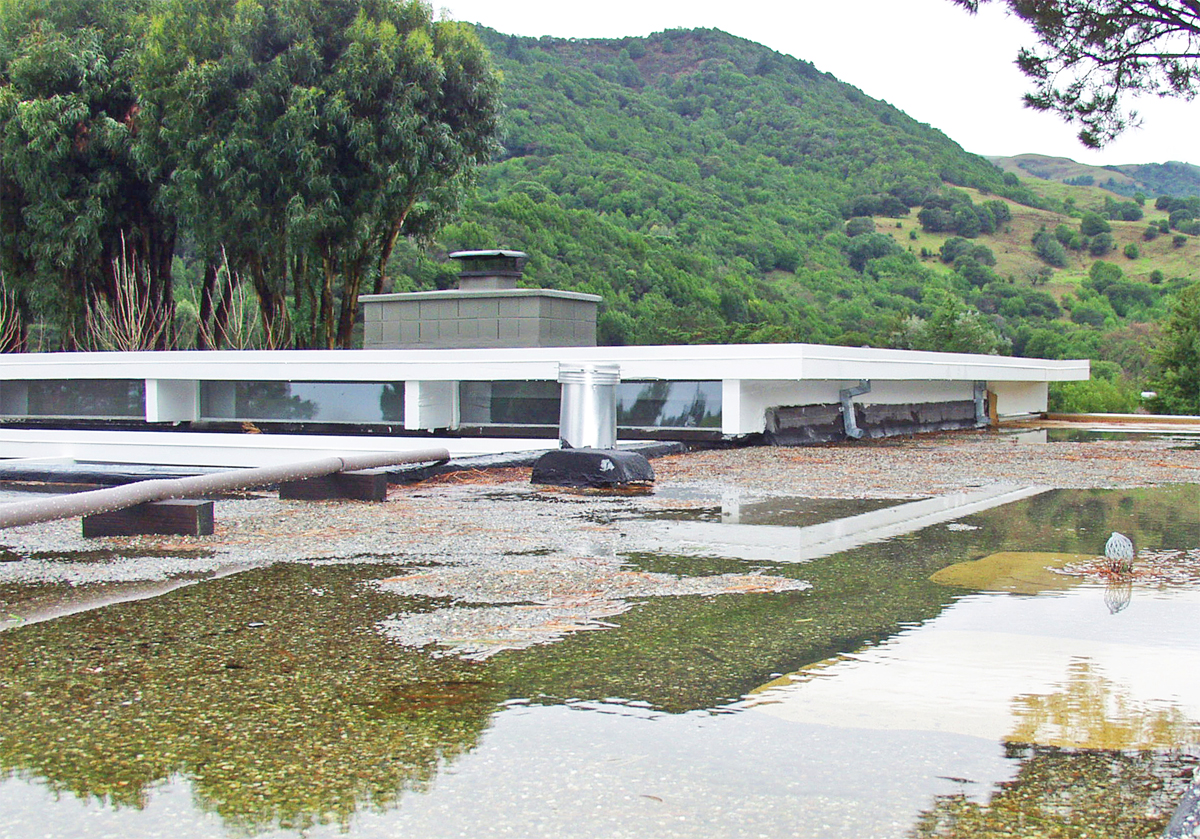Get Set for 'Old Man Winter'
 |
|
|
 |
|
|
 |
|
|
|
|
|
|
|
|
|
|
|
|
|
|
|
As hard as it is for sun worshipers like us to believe, some folks actually relish the coming of winter. Your home, however, likely does not share this sentiment, because of the cold and rainy season's weathering impact on structures.
As with just about anything else, a checklist for winterizing an Eichler is slightly different than one for conventional homes, but the basics are the same.
"It seems like a good time to check everything out," says general contractor Jonathan Cunha, owner of Vida Building Systems in Marin County, a home-improvement expert whom we consulted to compile our vital winter-prep checklist.
Now that autumn is upon us, your home will thank you—if you heed Cunha's nine points of inspection before it's too late. Let's take winterizing from the top:
1. Inspect your roof: If your roof is flat, look for signs of potential ponding, which can lead to leakage. If you have shingles, look for any that are buckled, cracked, or missing and have them replaced before the rains come. Cunha adds to check the 'boots' around vents and flashing to make sure they are not separating from the roof, and check that all skylights are closed and watertight.
2. Check rain gutters: "It's usually a good time to clean all your gutters and your downspouts," Cunha says of fall, noting that clogs can cause "ice dams" in cold spells as well as backflowing on the roof and eventually leakage. You might even consider installing gutter guards to keep those thousands (or at least hundreds) of rainwater gallons flowing, but Cunha says bluntly, "You still should check your gutters annually." Also, to preserve the foundation, add extensions if your downspouts don't direct the water at least five feet from your house.
3. Inspect chimney and damper: Cunha recommends doing regular visual inspections of your fireplace flue to ensure that it's clear, especially stressing the importance of abating creosote buildup and adding, "Consult with a chimney sweep if you have an actual wood-burning fireplace." Make sure the damper opens and closes correctly, no bricks have gone missing, and consider installing a flue cap if you don't already have one.
4. Check condition of exterior paint: This may be the first thing you do in case paint or caulk touchups are needed that shouldn't be done in wet or cold weather. "When you do start to see cracking…it's time to repaint, because [ignoring] that will cause further damage," says the contractor, who works primarily in home renovation. Caulking joints is key, he says, because "some of those points are all that's keeping things [such as air and water] from seeping in."




